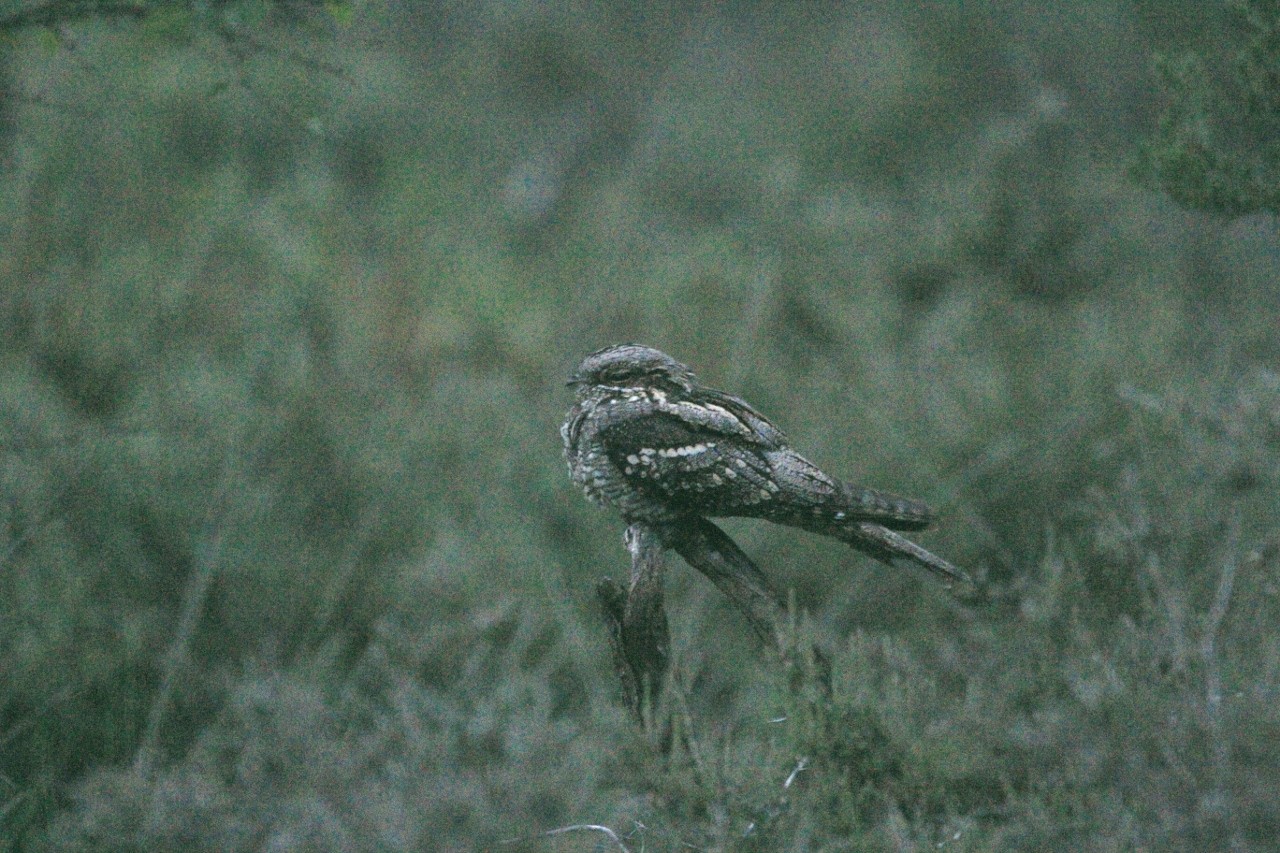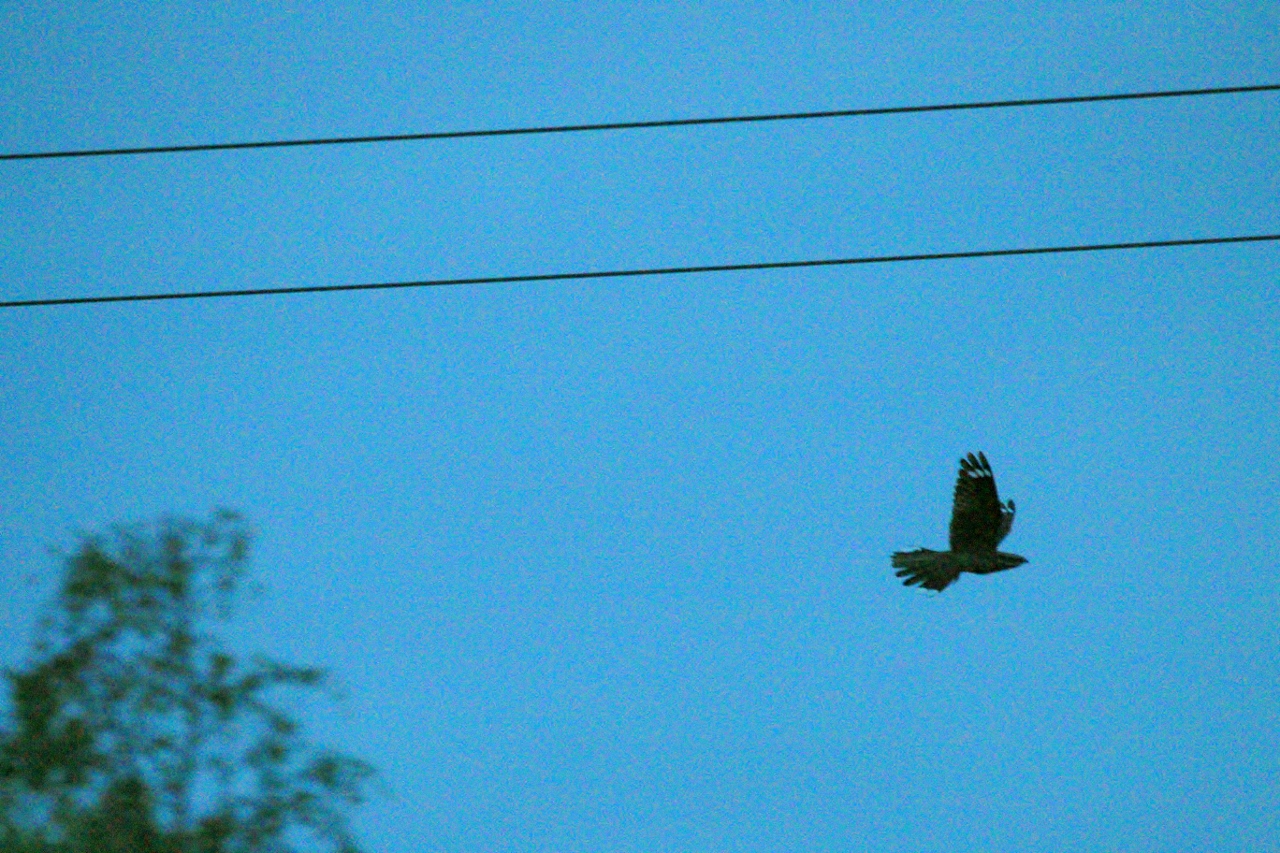 Abraham Lincoln
If given the truth, the people can be depended upon to meet any national crisis...
Abraham Lincoln
If given the truth, the people can be depended upon to meet any national crisis...
 Guildford news...
for Guildford people, brought to you by Guildford reporters - Guildford's own news service
Guildford news...
for Guildford people, brought to you by Guildford reporters - Guildford's own news service
Birdwatcher’s Diary No.190
Published on: 30 Jun, 2019
Updated on: 30 Jun, 2019
By Malcolm Fincham. This report focusing on summer migrant the nightjar.
The nightjar is one of our most fascinating summer migrants that come to visit and breed on our Surrey heathlands.

Our European nightjar has a flat, wide head, small bill and large eyes. It has a long, slender body, short legs, long, narrow wings and a long tail. Click on pictures to enlarge.
Short-staying visitors, they arrive mid to late May, breed here, then leave by mid-August.
Until recent years little was known about their migration and wintering sites, but through modern technology, tagging and tracking work, we have been able to learn much about these delightful critters, and now know they winter in southern Africa.
They favour heathland areas to breed of which Surrey still has its fair share. Thanks to conservation and management, they have been among a few birds that have actually increased slightly in recent years. However, they remain amber listed. A lack of available breeding habitat is thought to be a major issue for the species.
Inadvertent disturbance can also be an issue. Being ground-nesting birds their main predators are snakes, owls and red foxes. Though with encroachment of housing close to such heathlands, we can now add wandering cats, unleashed dogs and even humans to the mix.
Due to their elusive nocturnal habits, not much is known to the general public about nightjars. They have also been the basis for many myths and legends over the centuries.
In many European countries, where they also breed, the nightjar is known as a ‘goatsucker’ after its Latin name. This is because they were believed to feed from goats due to the fact that they were often found in close proximity to livestock. We now know that the attraction is the invertebrates associated with livestock.
While you may be lucky to see a nightjar silhouetted against the sky at dusk as it searches for insects, you are much more likely to hear one. The male has a unique ‘churring’ call which can contain up to 1,900 notes a minute!
Click here for audio clip of nightjars recorded by David Rose on Whitmoor Common
It remains well camouflaged during daylight hours due to its brown and black tree-bark-like plumage, fading into the background. It often takes a “keen-eye” and a lot of luck, to pick one out, perched up, incognito and motionless, in its daytime roost.
Their plumage is especially important for the female, as they are a ground-nesting bird that don’t make nests, just laying their eggs on bare soil, to incubate.
Adults have a flat, wide head and large eyes that aid their sight at night. In flight, they have obviously long wings and tails. Male nightjars can be differentiated from females by their white wing and tail patches.
Results from surveys on nightjar breeding success are as follows:
“There was a significant relationship between nest failure and disturbance. Failure being more likely in nests sites closer to paths.
“Failed nests also had poorer cover, being surrounded by short vegetation. Predation of eggs is the major cause of nest failure.
“The most likely mechanism for nest failure is that the incubating nightjar is flushed from the nest during daylight, leaving eggs exposed and vulnerable to avian predators, notably corvids.
“Nightjars display a very low frequency of flushing, only recorded in daylight, but it requires only one untimely flushing event for nest failure to occur through predation. Flushing agents included dogs. Recommendations are made for management measures to minimize the effects of walkers and their dogs.”
Some of the best places to watch nightjars in Surrey can be found on this link.
On my “local” heathland, just to the north of Guildford, I have only witnessed two pair, this year. I have encountered more pairs in previous decades, while the footfall of dog walkers I have noticed has increased in recent years. And heathland fires have no doubt hindered their success.
Hopefully we can sustain the population of these little known about though truly marvellous critters for future generations to enjoy.
Recent Articles
- Dragon Interview: Council Leader on the Latest HRA Report
- Stage Dragon: Murder on the Orient Express – Yvonne Arnaud Theatre
- Letter: GBC Improvement Work Was Hampered By Its Culture
- Letter: Half and Half is the Solution for Clandon House
- Camberley’s House of Fraser To Be Left Mothballed
- HRA Report Shows Overspend and Possible Fraud Occurred Despite Many Warnings
- Letter: Those in Elected Office Should Refrain from Deliberately Misleading the Public
- Cup Run Ends After City Fade in Second Half
- Press Regulator Condemns Behaviour of News Group Newspapers
- MP Says Raw Sewage Flooding Gardens Is ‘Absolutely Disgusting’ – ‘Thames Water Must Stop It’


Search in Site
Media Gallery
Dragon Interview: Local Artist Leaves Her Mark At One of England’s Most Historic Buildings
January 21, 2023 / No Comment / Read MoreDragon Interview: Lib Dem Planning Chair: ‘Current Policy Doesn’t Work for Local People’
January 19, 2023 / No Comment / Read MoreA3 Tunnel in Guildford ‘Necessary’ for New Homes, Says Guildford’s MP
January 10, 2023 / No Comment / Read More‘Madness’ for London Road Scheme to Go Ahead Against ‘Huge Opposition’, Says SCC Leader
January 6, 2023 / No Comment / Read MoreCouncillor’s Son Starts Campaign for More Consultation on North Street Plan
December 30, 2022 / No Comment / Read MoreCounty Council Climbs Down Over London Road Works – Further ‘Engagement’ Period Announced
December 14, 2022 / No Comment / Read MoreDragon Interview: GBC Reaction to the Government’s Expected Decision to Relax Housing Targets
December 7, 2022 / No Comment / Read MoreHow Can Our Town Centre Businesses Recover? Watch the Shop Front Debate
May 18, 2020 / No Comment / Read More













Recent Comments